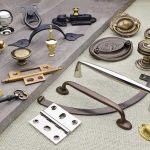We may receive a commission when you use our affiliate links. However, this does not impact our recommendations.
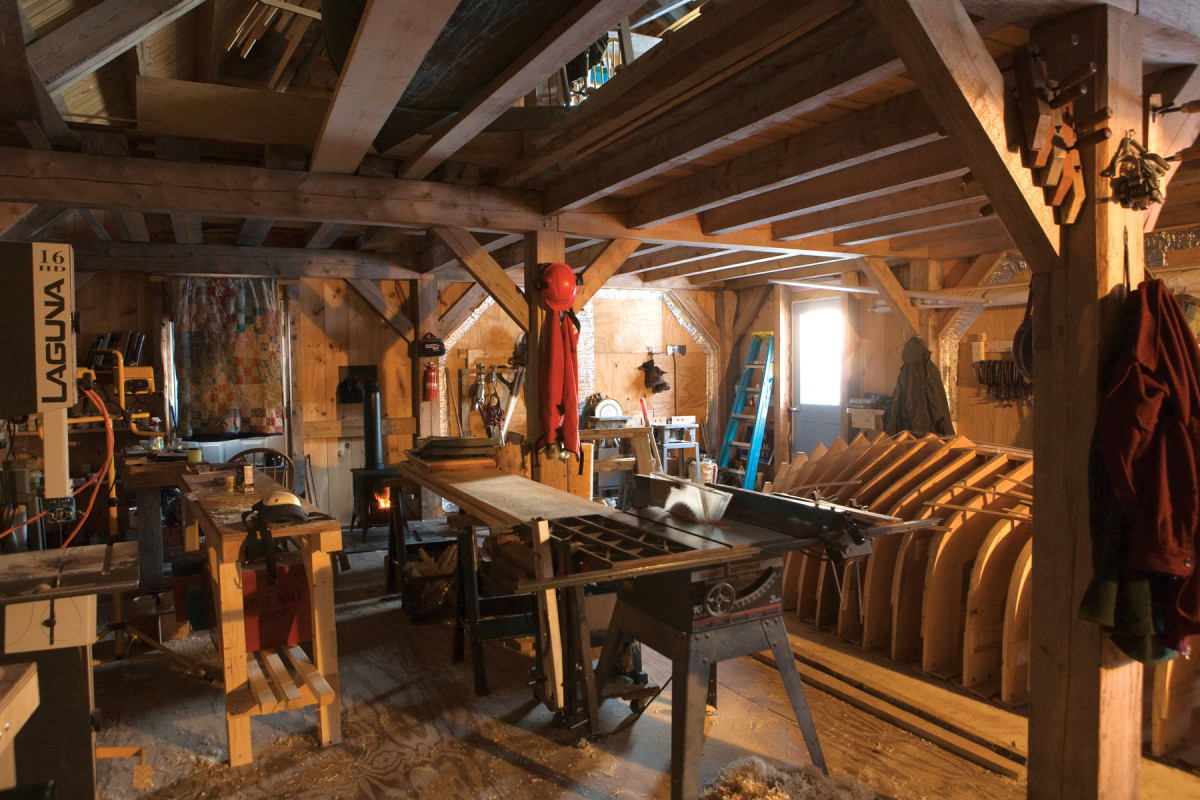
Editor’s note: This article originally appeared in the October/November 2009 issue of American Woodworker
The impetus for building my shop was to satisfy a passion that my late brother Glen and I had for building boats. After occupying his garage and my sister’s storage, we knew we needed a dedicated shop.
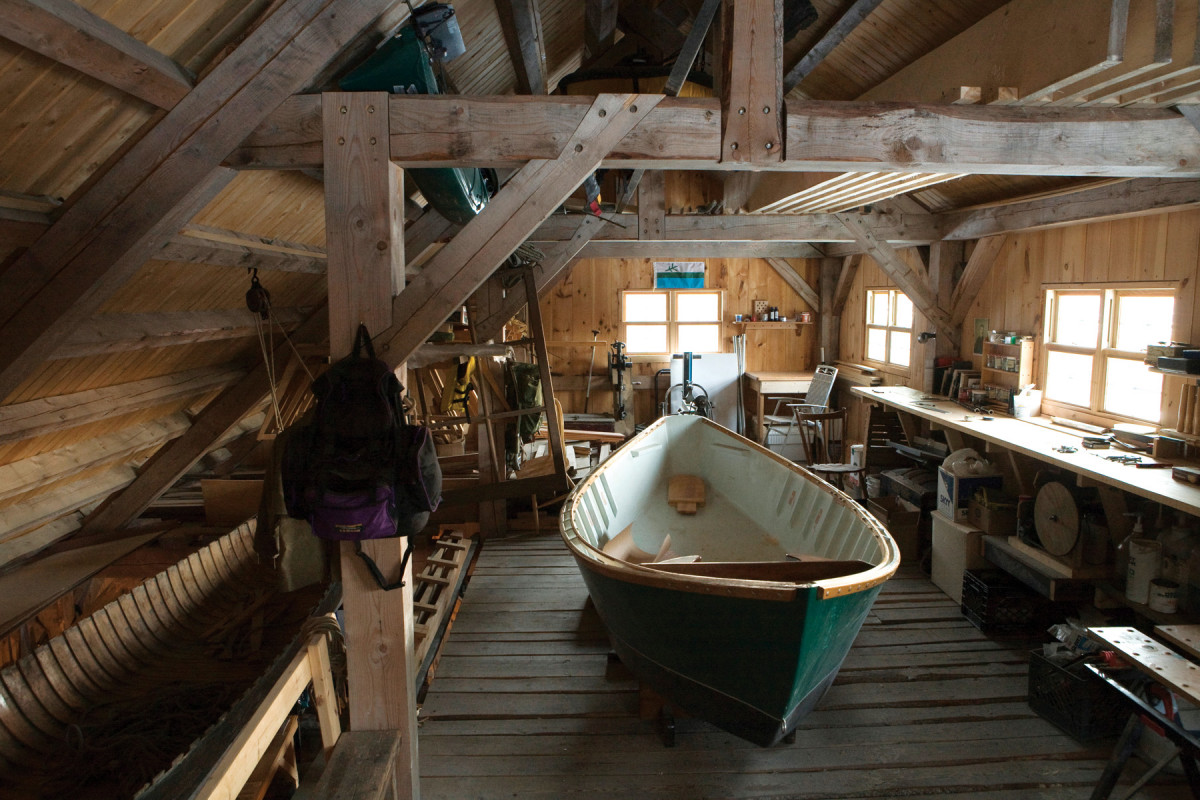 The building, which overlooks the St. John River Valley in St. David, Maine, is a 24′ x 34’ post-and-beam saltbox, designed by my companion Darlene’s brother, Dave Coltart. In boat builder’s lingo, her scantlings are massive. The main beams and rafters are 8x10s and the posts are 8×8 spruce. Roof purlins, joists, girts, and braces are 4x6s and 4x8s. Two fully insulated 12’ double doors open for access, light and ventilation.
The building, which overlooks the St. John River Valley in St. David, Maine, is a 24′ x 34’ post-and-beam saltbox, designed by my companion Darlene’s brother, Dave Coltart. In boat builder’s lingo, her scantlings are massive. The main beams and rafters are 8x10s and the posts are 8×8 spruce. Roof purlins, joists, girts, and braces are 4x6s and 4x8s. Two fully insulated 12’ double doors open for access, light and ventilation.
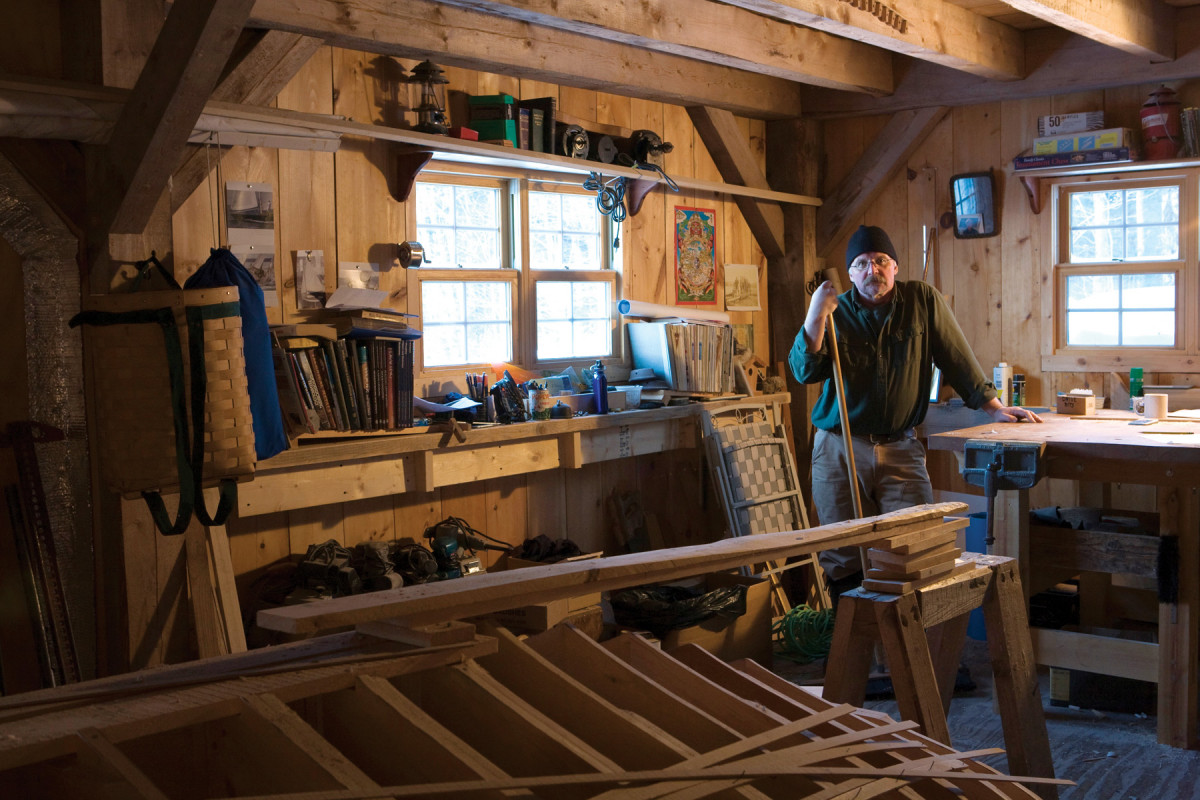 The timbers were logged off our property and sent to a local sawyer, who cut them while Dave marked out the mortises and tenons. We formed and poured a foundation resting on solid ledge, then constructed the deck and began raising the frame. Unfortunately, Dave was diagnosed with cancer during the construction, so I had to finish the job myself, learning this gifted artist’s version of post-and-beam joinery on the fly.
The timbers were logged off our property and sent to a local sawyer, who cut them while Dave marked out the mortises and tenons. We formed and poured a foundation resting on solid ledge, then constructed the deck and began raising the frame. Unfortunately, Dave was diagnosed with cancer during the construction, so I had to finish the job myself, learning this gifted artist’s version of post-and-beam joinery on the fly.
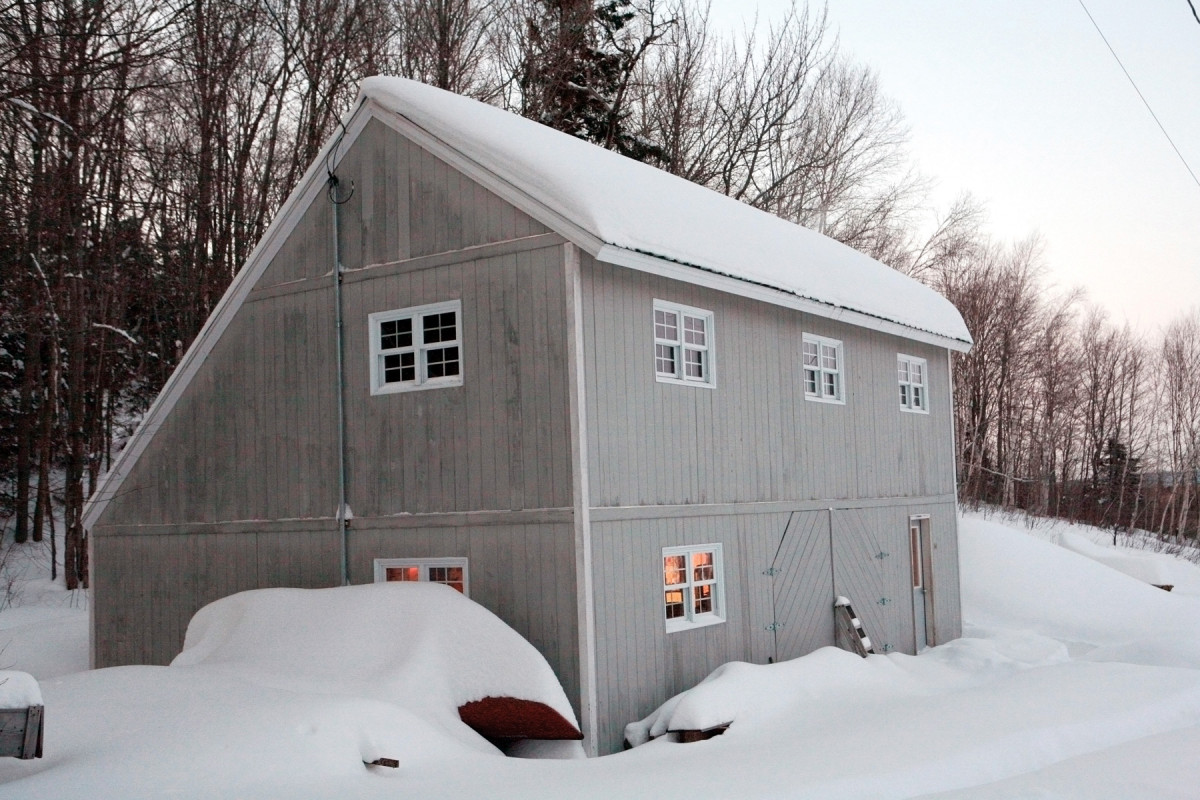 My main work table is a small workbench, a simple mortise and tenon job fashioned out of yellow birch that was harvested along with the timbers. Loaded tool boxes across its lower stretcher add a little ballast and stability. The space beneath the stairwell works well for my large homemade layout table. The outfeed tables for the bandsaw and tablesaw double as extra workbenches. All of my tools can be moved out of the way as space is needed. Half the first floor is currently occupied by a mold for a Haven 12-1/2 sailboat that’s a few years and many thousands of dollars away from completion. Upstairs, a 16’ spruce-planked mast table fills most of the east wall, and at the northeast corner is Darlene’s loading table. She’s a Civil War re-enactor with Company B, 20th Maine, and loads cartridges for her musket on it.
My main work table is a small workbench, a simple mortise and tenon job fashioned out of yellow birch that was harvested along with the timbers. Loaded tool boxes across its lower stretcher add a little ballast and stability. The space beneath the stairwell works well for my large homemade layout table. The outfeed tables for the bandsaw and tablesaw double as extra workbenches. All of my tools can be moved out of the way as space is needed. Half the first floor is currently occupied by a mold for a Haven 12-1/2 sailboat that’s a few years and many thousands of dollars away from completion. Upstairs, a 16’ spruce-planked mast table fills most of the east wall, and at the northeast corner is Darlene’s loading table. She’s a Civil War re-enactor with Company B, 20th Maine, and loads cartridges for her musket on it.
Around the shop you’ll see a cluttered assortment of boat building, logging and blacksmithing tools. Some of them are useful and some will be donated to a logging museum, once I write the grant applications to get one built (I earn most of my keep by consultation and grant writing for local communities). It’s an understatement to say I prefer older tools, but one major exception is my Laguna HD16 bandsaw. Even though its newness seems out of place, I haven’t experienced a second of buyer’s remorse since it arrived.
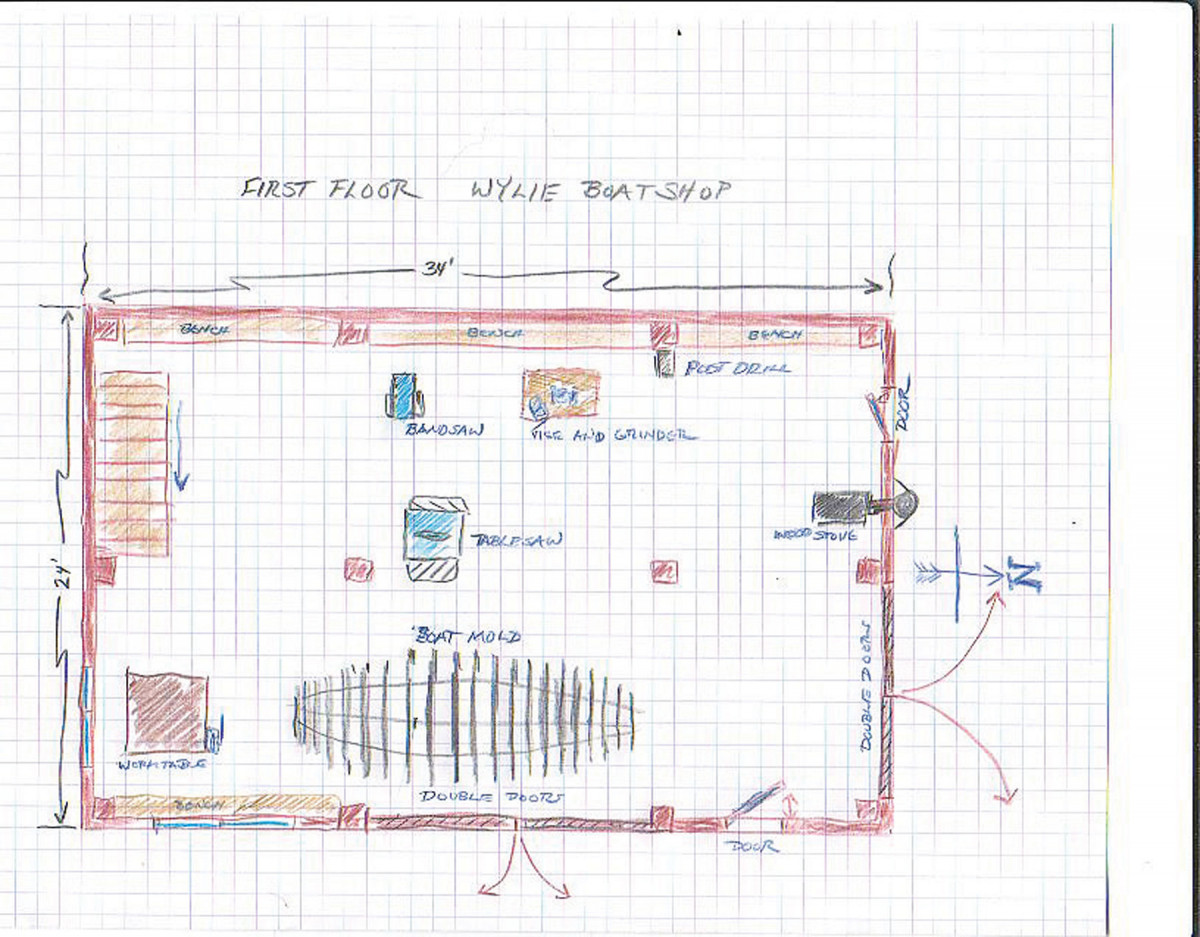 As in every shop, some things still need improvement. There are only three outlet boxes, dust collection is minimal and lighting is whatever’s handy: portable halogens, drop lights and morning sunlight. Heat comes from a small Vermont Castings woodstove that keeps the shop at a comfortable Yankee working temp in the 50-60˚ F. range. We keep the stove stoked by harvesting the more than 50 acres of Acadian forest in the back yard. -David Wylie
As in every shop, some things still need improvement. There are only three outlet boxes, dust collection is minimal and lighting is whatever’s handy: portable halogens, drop lights and morning sunlight. Heat comes from a small Vermont Castings woodstove that keeps the shop at a comfortable Yankee working temp in the 50-60˚ F. range. We keep the stove stoked by harvesting the more than 50 acres of Acadian forest in the back yard. -David Wylie
Here are some supplies and tools we find essential in our everyday work around the shop. We may receive a commission from sales referred by our links; however, we have carefully selected these products for their usefulness and quality.








